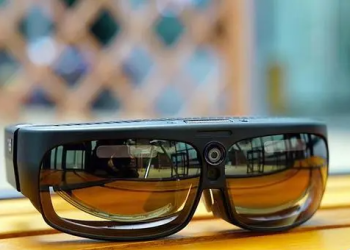Electronic devices have become an integral part of our daily lives, from smartphones and laptops to cameras and gaming consoles. However, these devices are often susceptible to damage during transportation and storage if not handled with care. In this article, we will explore essential tips and strategies for safely transporting and storing electronic devices, ensuring that your investments remain protected.
Choosing the Right Transportation Methods
When transporting electronic devices, it’s crucial to select the appropriate transportation method to minimize the risk of damage. Whether you’re traveling by car, plane, or public transportation, consider factors such as fragility, size, and weight when deciding how to transport your devices.
Packing Electronics Securely
Proper packaging is essential for safeguarding electronic devices against damage during transit. Use sturdy boxes, bubble wrap, and packing peanuts to cushion devices and prevent them from shifting or bumping against each other during transportation. Label boxes clearly to indicate fragile contents and ensure careful handling.
Protective Cases and Covers
Investing in protective cases and covers can provide an additional layer of defense against bumps, drops, and scratches. Choose cases made from durable materials that offer shock absorption and impact resistance, especially for portable devices like smartphones and tablets. Consider waterproof cases for added protection against moisture damage.
Temperature and Humidity Control
Extreme temperatures and high humidity levels can adversely affect electronic devices, leading to malfunctions and permanent damage. During transportation, avoid exposing devices to temperature fluctuations and moisture by storing them in climate-controlled environments or insulated containers.
Avoiding Physical Damage
Physical damage, such as cracks, dents, and bent components, is a common risk during transportation. Handle electronic devices with care and avoid placing heavy objects on top of them. Use padded sleeves or protective covers to shield devices from impact and pressure.
Handling Electronic Accessories
In addition to protecting the main electronic device, it’s essential to safeguard accessories such as chargers, cables, and peripherals. Organize accessories neatly and secure them within the same packaging as the device to prevent loss or damage.
Security Measures
Protect electronic devices from theft and unauthorized access by using security measures such as locks, passwords, and biometric authentication. Enable device tracking features and install security software to remotely locate and secure devices in case of loss or theft.
Storage Solutions
When storing electronic devices at home or in a storage facility, choose a clean, dry, and well-ventilated environment to prevent moisture buildup and mold growth. Store devices away from direct sunlight and sources of heat to avoid damage from UV radiation and excessive temperatures.
Cleaning and Maintenance
Regular cleaning and maintenance are essential for prolonging the lifespan of electronic devices and ensuring optimal performance. Use microfiber cloths and electronic-safe cleaning solutions to remove dust, fingerprints, and smudges from screens and surfaces.
Insurance and Warranty Coverage
Consider purchasing insurance and warranty coverage for electronic devices to protect against accidental damage, theft, and hardware failures. Review coverage options carefully to understand the terms, limitations, and exclusions of the policy.
Preparing for Long-Term Storage
Before storing electronic devices for an extended period, take precautions to prevent battery drain and component degradation. Fully charge batteries and remove them from devices to prevent corrosion and leakage. Store devices in their original packaging or protective cases to maintain their condition.
Customizing Transportation and Storage Solutions
Tailor your transportation and storage strategies to suit the specific needs of your electronic devices and personal preferences. Explore custom-made carrying cases, storage organizers, and mounting solutions designed for different types of electronics and usage scenarios.
Case Studies and Examples
Learn from real-life examples of successful and unsuccessful transportation and storage practices. Share stories of devices that were well-protected during transit and others that suffered damage due to improper handling or storage. Analyze the factors that contributed to each outcome and extract valuable lessons and best practices.
Conclusion
Safely transporting and storing electronic devices is essential for protecting your investments and ensuring their longevity. By following the tips and strategies outlined in this article, you can minimize the risk of damage and enjoy your electronic devices for years to come.

















